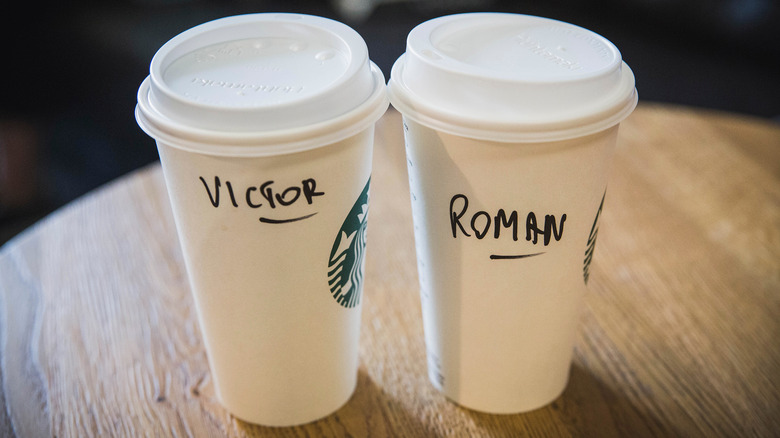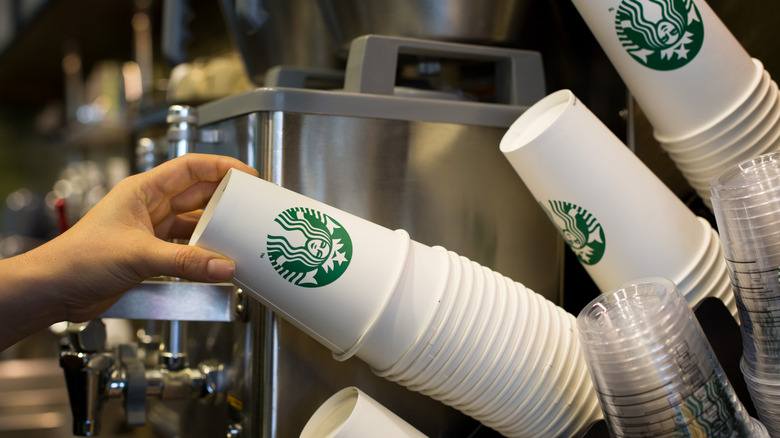How Starbucks Kept Track Of Orders Before Writing On Cups
If you've received a Starbucks drink with your name written on the cup, you might've taken a pause to see if your name has been spelled correctly. Misspelled names on coffee orders have become somewhat legendary, with YouTube videos turning the experience into comedy acts. No, Starbucks doesn't have to handwrite names. The company obviously has the technology to print labels, yet many stores have embraced the charm of handwritten scrawl.
In 2012, when Starbucks began to use black pens on orders, Angry Espresso observes, the company aimed to create connections and help both baristas and customers track whose drink belonged to whom. Baristas must work fast, informs Zippia the Career Expert, and espresso-slinging servers have to keep the names and variations of different kinds of coffee drinks in mind while remembering what each customer has ordered. But before Starbucks was creating social media buzz with their penned style, they used a different method to organize orders.
A code made of coffee cups
As Starbucks recalls, the 1987 company was a much smaller enterprise, there was no secret menu, and baristas could efficiently serve shop regulars items from a concise menu. Baristas would look at cups laid on their espresso machines and know exactly how many drinks to make. The way the cup was positioned would inform the barista which beverage was ordered: a front-facing logo might indicate a drink made of whole milk; the reverse would communicate a nonfat beverage (via Starbucks Stories). These coded cup meanings varied from store to store. When written markings began to appear on orders, it was a big deal for business. The change was even featured on a European television spot as the trend caught on at Starbucks shops around the world.
So the next time you order a morning cuppa from your local barista, see if there's an undercover system you may not have noticed before.

